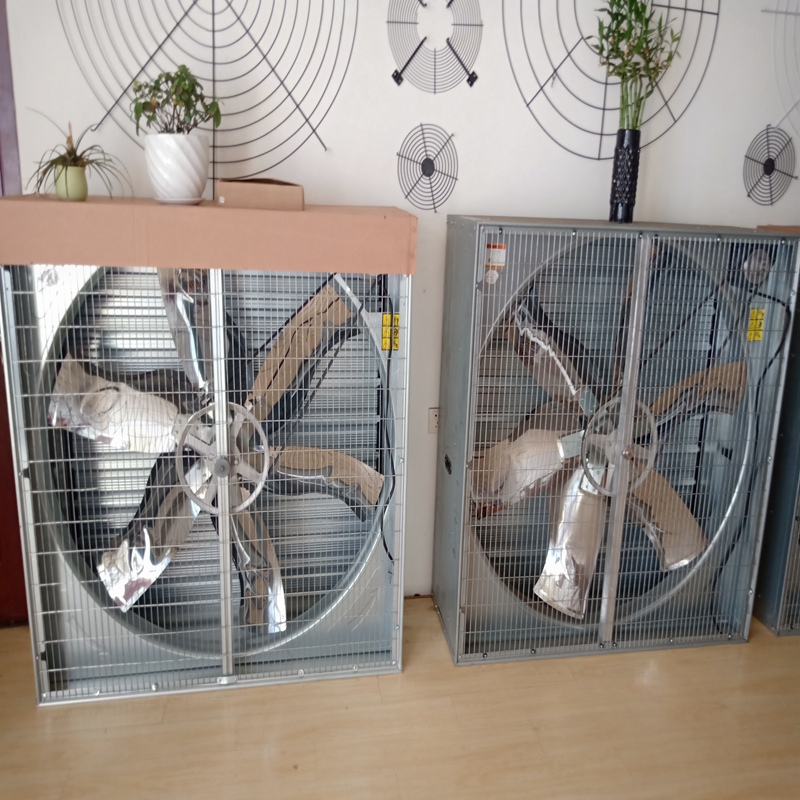Optimal Exhaust Fans for Metal Building Ventilation Solutions and Efficiency
Aug . 21, 2024 19:13 Back to list
Optimal Exhaust Fans for Metal Building Ventilation Solutions and Efficiency
The Importance of Exhaust Fans for Metal Buildings
In today’s industrial landscape, metal buildings have become increasingly prevalent due to their durability, cost-effectiveness, and adaptability. However, one critical aspect that often gets overlooked is the need for proper ventilation. This is where exhaust fans come into play. They are essential for maintaining air quality, ensuring safety, and enhancing overall operational efficiency within metal structures.
Understanding Ventilation Needs
Metal buildings, such as warehouses, factories, and agricultural facilities, are typically sealed tightly to withstand various environmental factors. While this feature helps in insulation and energy efficiency, it also poses ventilation challenges. Lack of proper airflow can lead to the accumulation of heat, humidity, and indoor pollutants, which may adversely affect both equipment and personnel.
Exhaust fans are designed to mitigate these issues by promoting adequate air exchange. By drawing out stale air, excess heat, and harmful fumes, they create a healthier indoor atmosphere. This is particularly crucial in environments where chemicals are used or where heavy machinery operates, as it significantly reduces the risk of hazardous conditions.
Enhancing Workplace Safety
In environments such as manufacturing plants and warehouses, safety is paramount. Poor air quality can lead to respiratory problems and decrease the effectiveness of employees. Additionally, the build-up of flammable gases or dust can create dangerous conditions. Exhaust fans play a vital role in minimizing these risks. They help to ensure that harmful substances are expelled, thereby maintaining breathable air and a safer working environment. Having adequately functioning exhaust systems not only complies with safety regulations but also enhances employee well-being and productivity.
Energy Efficiency and Cost Savings
Installing exhaust fans in metal buildings contributes significantly to energy efficiency. By effectively removing hot and humid air, these fans help to maintain a stable temperature, reducing the need for air conditioning systems. This, in turn, leads to lower energy bills and less wear and tear on HVAC equipment, leading to longer service life and reduced maintenance costs.
exhaust fans for metal buildings

Furthermore, modern exhaust fans are often equipped with advanced technologies that allow for variable speed operation
. This means that they can adjust their performance based on real-time conditions, ensuring optimal efficiency and reducing unnecessary energy consumption.Selecting the Right Exhaust Fans
Choosing the right exhaust fans for metal buildings involves considering several factors
1. Airflow Requirements Assess the space’s size and the type of activities conducted within it to determine the necessary airflow rate. 2. Fan Type Depending on the specific needs, one can opt for wall-mounted, roof-mounted, or inline fans.
3. Control Systems Look for systems that offer automation options, such as thermostats or humidity sensors, which can optimize performance based on current conditions.
4. Durability Given that metal buildings may face harsh environmental conditions, selecting exhaust fans made of durable materials resistant to corrosion is essential.
5. Noise Levels Consider noise restrictions in certain environments. Choose fans that operate quietly while maintaining efficiency.
Conclusion
Exhaust fans are not just an accessory but a necessity for metal buildings. They play a vital role in ensuring optimal ventilation, improving air quality, enhancing safety, and providing energy efficiency. Investing in the right exhaust fan system is crucial for the longevity of the building and the health and productivity of its occupants. As industries continue to evolve, integrating effective ventilation solutions will remain a central focus in the design and maintenance of metal buildings.
-
Hot Sale 24 & 18 Door Rabbit Cages - Premium Breeding Solutions
NewsJul.25,2025
-
Automatic Feeding Line System Pan Feeder Nipple Drinker - Anping County Yize Metal Products Co., Ltd.
NewsJul.21,2025
-
Automatic Feeding Line System Pan Feeder Nipple Drinker - Anping County Yize Metal Products Co., Ltd.
NewsJul.21,2025
-
Automatic Feeding Line System - Anping Yize | Precision & Nipple
NewsJul.21,2025
-
Automatic Feeding Line System - Anping Yize | Precision & Nipple
NewsJul.21,2025
-
Automatic Feeding Line System-Anping County Yize Metal Products Co., Ltd.|Efficient Feed Distribution&Customized Animal Farming Solutions
NewsJul.21,2025






